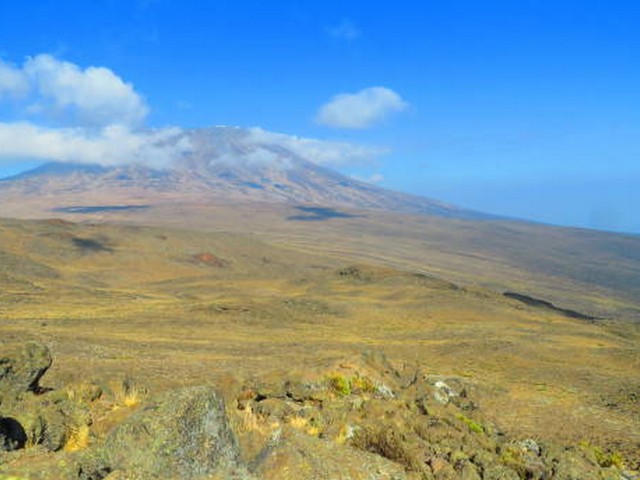How To Protect Kilimanjaro’s Environment While Trekking
Kilimanjaro Centre for Trekking and Ecotourism – KCTE
Mount Kilimanjaro is not just a mountain; it’s a beacon of Africa’s natural splendor, a towering invitation to adventurers worldwide. As guardians of this majestic landscape, we at the Kilimanjaro Centre for Trekking and Ecotourism (KCTE) are dedicated to preserving its beauty while offering unforgettable trekking experiences. In this blog post, we will explore essential strategies to protect Kilimanjaro’s fragile environment, ensuring that it continues to inspire awe for generations to come.
Understanding the Impact of Human Activity
Before delving into the “how,” it’s crucial to understand the “why.” Human activity, if not managed responsibly, can lead to significant environmental degradation. The effects can range from litter and pollution to more severe consequences like habitat destruction and water contamination. By understanding our impact, we can take proactive steps to minimize it.
The Leave No Trace Principles on Kilimanjaro
Plan Ahead and Prepare
Proper preparation is the bedrock of environmental conservation. We at KCTE emphasize the importance of understanding the challenges and regulations of Kilimanjaro treks. This includes familiarizing yourself with the various routes, weather conditions, and packing the right equipment to minimize waste.
Travel and Camp on Durable Surfaces
The paths and campsites on Kilimanjaro are designed to minimize the environmental footprint of trekkers. Stick to these trails and camp in designated areas to avoid harming native vegetation and soil.
Dispose of Waste Properly
“Pack it in, pack it out” is a golden rule on the mountain. All waste, including organic, must be carried off the mountain. KCTE provides all our clients with waste disposal bags to ensure nothing is left behind.
Leave What You Find
Preserve the natural habitat by not picking plants, rocks, or other natural artifacts. Every element of Kilimanjaro’s ecosystem plays a role in its environmental integrity.
Minimize Campfire Impacts
Campfires can cause lasting impacts and are generally not necessary on Kilimanjaro. We encourage the use of portable stoves for cooking and layers of clothing for warmth instead of fire.
Respect Wildlife
Maintain a safe distance from the wildlife you encounter. Feeding or disturbing wildlife can alter their natural behaviors and endanger both the animals and trekkers.
Be Considerate of Other Visitors
Part of protecting Kilimanjaro’s environment is ensuring it can be enjoyed by others. Keep noise to a minimum and let the sounds of nature prevail.
Adopting Sustainable Trekking Technologies
At KCTE, we are pioneers in integrating sustainable technologies in our trekking activities. From solar-powered equipment to eco-friendly waste disposal systems, we ensure that our operations help in maintaining Kilimanjaro’s pristine condition.
Community Involvement in Conservation Efforts
Protecting Kilimanjaro is a community effort. KCTE supports local conservation initiatives by involving local guides and porters who are trained in sustainable practices. By empowering the local community, we ensure that the conservation knowledge and practices extend beyond our treks.
KCTE’s Commitment to Ecotourism
As part of our ongoing commitment to Kilimanjaro’s environment, KCTE adheres to strict ecotourism policies. Our guided treks are not just about reaching the summit; they are educational experiences designed to foster a deeper appreciation for nature and an understanding of the importance of conservation.
Why Choose KCTE for Your Kilimanjaro Trek?
Choosing KCTE means partnering with a dedicated team that places the highest priority on both guest experience and environmental preservation. Our expert guides, comprehensive trek preparation, and adherence to eco-friendly practices ensure that your trek is successful and sustainable.
Conclusion: Your Role in Protecting Kilimanjaro
Every trekker is a vital participant in the conservation of Kilimanjaro. By choosing responsible trekking practices, you contribute to preserving this iconic mountain’s beauty and biodiversity. Remember, we do not inherit the earth from our ancestors; we borrow it from our children.
FAQ
Q: How difficult is it to follow the Leave No Trace principles on Kilimanjaro?
A: With proper preparation and guidance from experienced guides like those at KCTE, following these principles is straightforward and enhances your trekking experience.
Q: What should I do with organic waste on the mountain?
A: All waste, including organic, should be packed out. Decomposition rates on Kilimanjaro are slow, and leaving organic waste can attract wildlife unnaturally.
Q: Can I use drones or other electronic devices on Kilimanjaro?
A: The use of drones is restricted within the national park. Other electronic devices are permitted but should be used responsibly to minimize disturbance.
Q: How can booking with KCTE make a difference in conservation efforts?
A: By booking with KCTE, you support a business that actively contributes to conservation efforts and practices responsible tourism. Your choice supports sustainable business practices that are crucial for the long-term preservation of Kilimanjaro.
Protecting Kilimanjaro’s environment is not just the responsibility of conservationists but of every individual who steps foot on this magnificent mountain. Book your Kilimanjaro climbing adventure with Kilimanjaro Centre for Trekking and Ecotourism (KCTE) today, and take the first step towards a truly sustainable adventure. Together, let’s keep Kilimanjaro majestic, clean, and welcoming for all who dream to conquer its heights.




